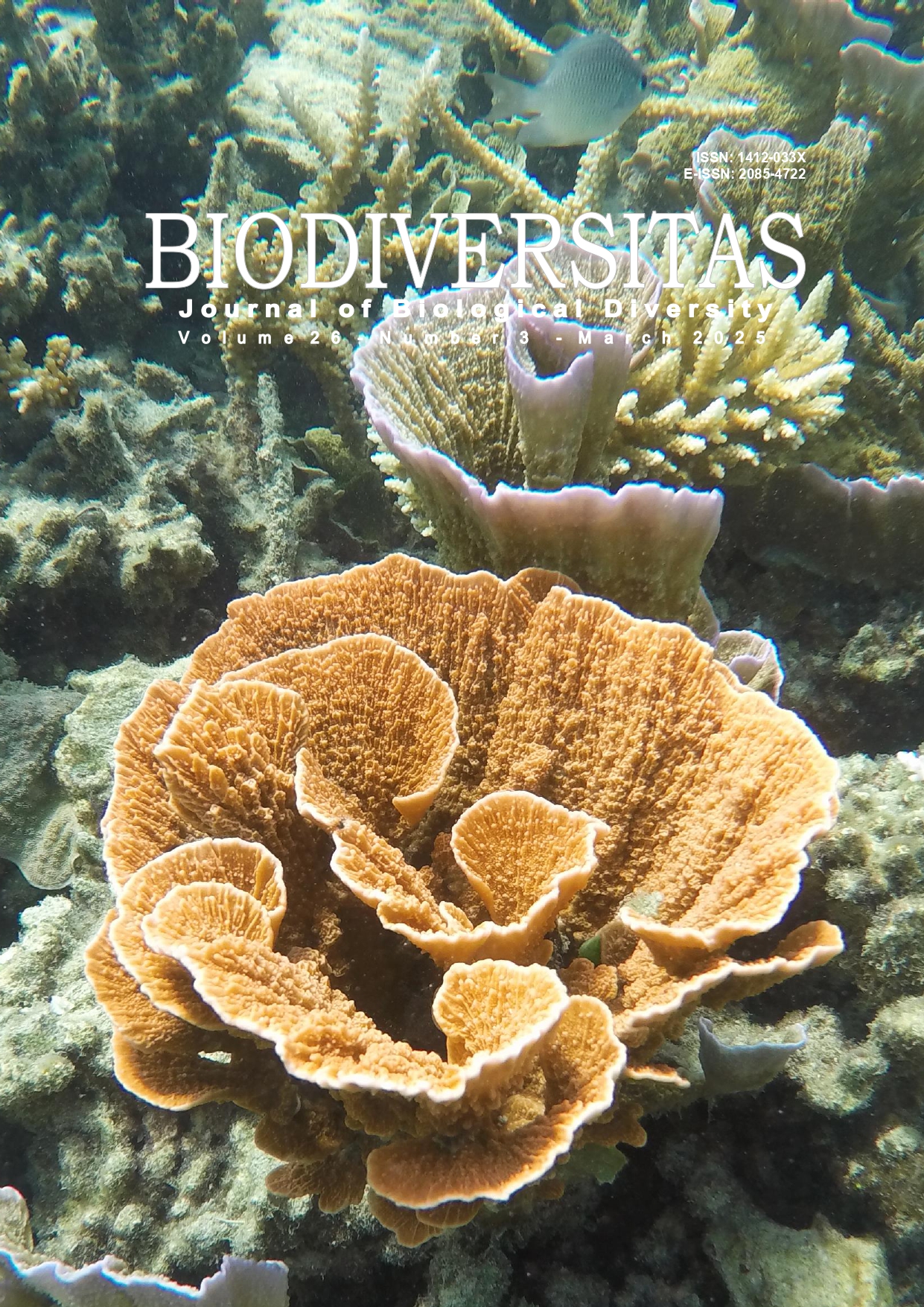Plant diversity and their importance for conservation in Don Pa Puei Sacred Forest, Si Chiang Mai District, Nong Khai, Thailand
##plugins.themes.bootstrap3.article.main##
Abstract
Abstract. Maneewong N, Pochayavanich R, Phonkerd N, Saensouk S, Piwpuan N. 2025. Plant diversity and their importance for conservation in Don Pa Puei Sacred Forest, Si Chiang Mai District, Nong Khai, Thailand. Biodiversitas 26: 1343-1354. The plant's diversity, traditional utilizations, and the importance of their conservation status in Don Pa Puei Sacred Forest in Ban Mo Village, Si Chiang Mai District, Nong Khai Province, Thailand, were studied from February 2023 to March 2024. Species richness data were surveyed along the nature trails and walkways around the forest. Plant specimens were collected, and their photos were recorded. Quantitative data of tree species were gathered in five randomly placed plots (20×20 m2). Diversity indices, including Shannon-Weiner's diversity index (H'), evenness index (J'), Important Value Index (IVI), Relative Density (RD), Relative Frequency (RF), and Relative Dominance (RDo) were calculated. A total of 36 families, 62 genera, and 65 species were identified. Tree species represented the highest proportion (49.23%) among all habit types. The Arecaceae, Cucurbitaceae, and Leguminosae families each had the highest number of species (4). The H' and J' indices for tree species were 1.93 and 0.73, respectively. Lagerstroemia calyculata had the highest IVI value (78.65%). Four species, Afzelia xylocarpa, Dipterocarpus alatus, Hopea odorata, and Shorea roxburghii are threatened according to IUCN Red List. Capparis pyrifolia is considered as a rare species according to the threatened plants in Thailand checklist. Fifteen species (23.07%) out of 65 had traditional uses by local people, and 19 species (29.23%) have the potential for medicinal uses. The eradication of invasive species, management of climbers, and protection of the area from land-use changes are urgently needed for the conservation of the forest's biodiversity; this treasure demands our utmost respect and protection.

